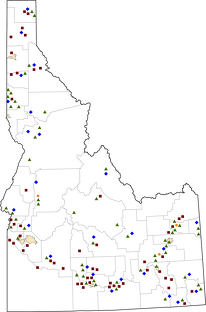Idaho
State Office of Rural Health
Idaho Bureau of Rural Health and Primary Care
Phone: 208.334.0669
Email: RuralHealth@dhw.idaho.gov
view details
Idaho Nonmetro Population
1,893,296
Estimated population
500,418
(26.4%)
People living in nonmetro areas
Idaho Rural Healthcare Facilities
26
Critical Access Hospitals
1
Rural Emergency Hospitals
57
Rural Health Clinics
53
Federally Qualified Health Centers*
2
Short Term/PPS Hospitals*
*Sites according to data.HRSA.gov (July 2025), showing only locations outside of
U.S. Census
Bureau Urban Areas with a population of 50,000 or more
Last Updated: 9/11/2025
Last Reviewed: 12/29/2023



Selected Social Determinants of Health for Rural Idaho